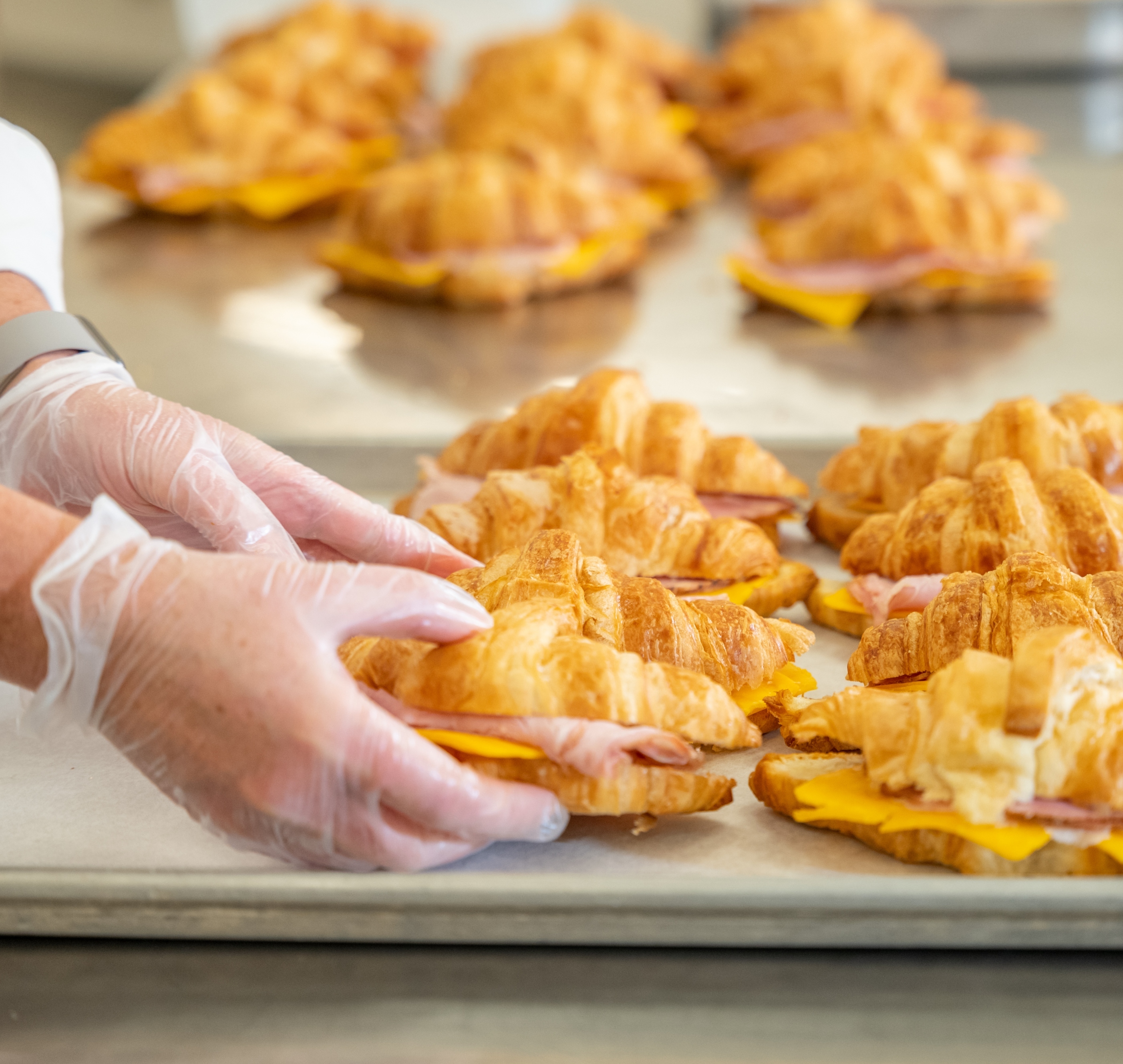
Conquering School Breakfast for All
March 02, 2023 | By Dani Chandler
As the push for Healthy School Meals for All continues, we’re highlighting the importance of school breakfast and strategies to make sure students are set up for success.
As the push for Healthy School Meals for All continues across the nation, it’s important to not let school lunch steal the spotlight. School breakfast is equally important and starts students’ day off with the nutrients they need to learn and thrive in the classroom. According to the U.S. Department of Agriculture, total participation in the school breakfast program has increased by approximately 8.5 million between 2021 and 2022.
“Since Healthy School Meals for All started in California, our breakfast participation has grown from 3,000 to 6,000. Access to the breakfast program has become undeniable by simply removing the question or concern around how to pay for the meal. It allows healthy food to be a resource available to students just like libraries, counseling services, or special education. Everyone knows trying to learn on an empty stomach is hard. Now, teachers can ask ‘Would you like breakfast?’ ”
- Kristen Tekell, Food Service Director, Napa Valley Unified School District
Although school breakfast may become increasingly available for students as school meals become free in more states, we recognize it can present other types of challenges compared to serving school lunch. Many school breakfasts are served before the regular school day starts, or ‘before the bell’. For some families, getting students to school before the scheduled start time is difficult due to work schedules and transportation issues. Luckily, serving breakfast ‘after the bell’ can be a successful way to navigate these barriers. Read on to learn about various ways to serve breakfast and how to set students’ days up for success.
Breakfast After The Bell
Breakfast after the bell is a broad reference to the practice of offering breakfast to students after the first bell. One of the largest challenges for access to school breakfast is serving time. Breakfast after the bell provides an equitable opportunity for students to get a meal in the morning. Different models of Breakfast After the Bell may include Breakfast in the Classroom, Grab ‘n Go, and Second Chance Breakfast.
According to a study conducted by the University of California, Santa Barbara, “Breakfast After the Bell programs can help reduce chronic absenteeism and improve other student outcomes. This research reinforces that school breakfast can very much be intertwined with student success in schools that implement Breakfast After the Bell programs.”


Breakfast After The Bell
Breakfast after the bell is a broad reference to the practice of offering breakfast to students after the first bell. One of the largest challenges for access to school breakfast is serving time. Breakfast after the bell provides an equitable opportunity for students to get a meal in the morning. Different models of Breakfast After the Bell may include Breakfast in the Classroom, Grab ‘n Go, and Second Chance Breakfast.
According to a study conducted by the University of California, Santa Barbara, “Breakfast After the Bell programs can help reduce chronic absenteeism and improve other student outcomes. This research reinforces that school breakfast can very much be intertwined with student success in schools that implement Breakfast After the Bell programs.”
Breakfast in the Classroom
Breakfast in the Classroom is one of the most successful ways to ensure students get in their first meal of the day. In this serving method, meals are delivered to each classroom, and the teacher serves breakfast right after the start of school. Typically, a roster is checked off for each student who eats, and then the food service staff retrieves the roster along with the remaining breakfast products.
According to the USDA, “little instructional time is lost [with Breakfast in the Classroom], as breakfast only takes 10 to 15 minutes for the student to eat. Many teachers use this time to take attendance, collect homework, deliver announcements, or read to the class. Many teachers feel this is a valuable use of time and that their classes are more productive when students enjoy a healthy breakfast.”
Studies have shown that more kids eat breakfast when served this way as it offers a comfortable environment for eating, is part of the school day, and all students have the ability to receive a meal.

Grab ‘n Go
Grab ‘n Go breakfast is also an effective method and is exactly as described: breakfast served on the go.
Generally, items are put in a bag or some sort of packaging designed for students to take with them. This is a quick and easy option for busy students, and since they are taking the food with them, they can eat when they are hungry or when it best fits into their morning.
Grab ‘n Go breakfasts can be served first thing in the morning or between classes. Mobile service carts or portable breakfast stations are a great way to make grabbing breakfast more convenient and accessible. Carts can be placed in high-traffic areas, such as by the buses when kids arrive, at the school entrance, in hallways, or near the gym. Offering this option to students allows them the flexibility to eat when and where they want.

Grab ‘n Go
Grab ‘n Go breakfast is also an effective method and is exactly as described: breakfast served on the go.
Generally, items are put in a bag or some sort of packaging designed for students to take with them. This is a quick and easy option for busy students, and since they are taking the food with them, they can eat when they are hungry or when it best fits into their morning.
Grab ‘n Go breakfasts can be served first thing in the morning or between classes. Mobile service carts or portable breakfast stations are a great way to make grabbing breakfast more convenient and accessible. Carts can be placed in high-traffic areas, such as by the buses when kids arrive, at the school entrance, in hallways, or near the gym. Offering this option to students allows them the flexibility to eat when and where they want.
Second Chance Breakfast
Second Chance Breakfast is another great way to ensure students start their day nourished and ready to learn. This method is very successful for secondary schools to capture students who aren’t able to come in early to eat before school but are more likely to grab something between classes.
With Second Chance Breakfast, there is usually an extension of time between the first and second periods. During this in-between, students can retrieve food from the cafeteria on their way to their next class, sit briefly in the cafeteria, and eat their meals.
This is especially helpful for students who may not be hungry first thing in the morning and can also reduce the stigma associated with school breakfast as it becomes part of the school day.
An Equitable Option for All
As we continue the fight for school food reform, let’s make sure to include breakfast in the conversation and make it an equitable option for all kids.
Research shows that students who participate in school breakfast show improved attendance, behavior, and academic performance while decreasing tardiness.
Whether students can arrive at school early and eat breakfast before the day starts, have it first thing in the classroom, or retrieve it on the way to their second period, breakfast is crucial to ensuring our nation’s kids are fed and well-nourished.
If you work in school food and want to learn more, check out our resources on school breakfast on The Lunch Box.






